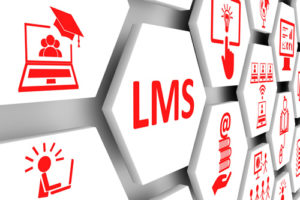Just a few years ago, educators were excited to use a robust learning management system (LMS) in which course materials, class discussion boards, and grade information could all be arrayed within a single system. By 2014, 99 percent of universities had an LMS in place and 74 percent of faculty felt they were useful instructional tools.
Now, it appears that an LMS is not enough!
As LMSs have advanced and new technologies are appearing in classrooms at the collegiate and PK-12 levels, the LMS is beginning to merge into the digital learning environment (DLE). The DLE encompasses not only the traditional domains of the LMS but expands to include greater personalization, advising, and more robust analytics.
The future of online learning
According to the EDUCAUSE initiative funded by the Bill & Melinda Gates Foundation, the DLE should be an LMS core, around which other functions can be incorporated. Sort of like adding additional “Legos” to a core Lego statue. The “Lego” approach to moving towards a next-generation digital learning environment (NGDLE) allows for more flexibility. These “Lego” bits are sometimes known as a portion of the total Learning architecture (TLA) to create specifications that allow learning tools to integrate into the LMS to provide additional functionality.
Related: How Universal Design for Learning can help the LMS reach every learner
Each of these “Lego” add-ons may be a stand-alone piece of software or a Chrome extension or similar small tool that manages a single function. Each individual tool itself can be often identified under the learning tools interoperability (LTI) standard created by the IMS Global Learning Consortium. Sometimes these tools are also called digital learning tools (DLTs). Both terms represent add-ons to the core LMS.
As an example, the University of Wisconsin System uses Canvas as is core LMS, with Blackboard Collaborate Ultra as a TLA that integrates into the LMS using the LTI standards to provide enhanced video support. Additionally, instructors can use Tampermonkey, a Chrome extension, to export student interaction data from the LMS to see how students are using course assets in more detail than in the LMS itself. All these components form the DLE or even the NGDLE.
For a better understanding of all the types of applications integrated into a modern LMS, click to see the University of Wisconsin- System listing.
The goal of the NGDLE is to provide an open system that allows for:
- the seamless integration and interoperability of a range of learning tool
- encouragement and support for personalization and collaboration for all users
- accessibility and universal design for all users
- the tools required to analyze student and course data by instructors and instructional design support staff
- students to better track their own performance.
In theory, faculty and students will use the NGDLE to develop custom learning environments (CLEs) in order to allow each participant to achieve at their greatest potential.
Related: Why combining assessments and LMS technology is essential
Although there are many advantages to building a robust NGDLE to support online and blended teaching and learning, there are some disadvantages. One disadvantage of such modularity in NGDLEs is the need for faculty to explore a wide range of tools and determine that work best to support their instructional needs. The best tools may well differ between courses. The additional range of tools will cause IT staff to provide greater support across a wider range of tools and solutions. This will also cause IT more setup time and transition time during migrations as the functionally of each tool will have to be considered as part of any migration process. This is in addition for the need to understand the plethora of acronyms that the move into digital learning environments it causes all of us.

